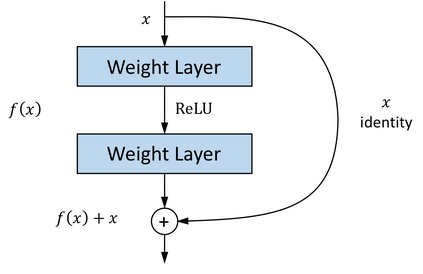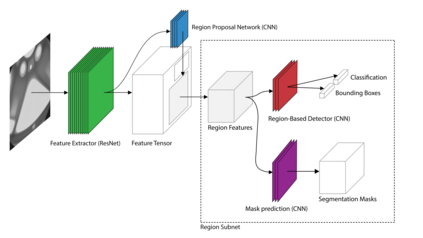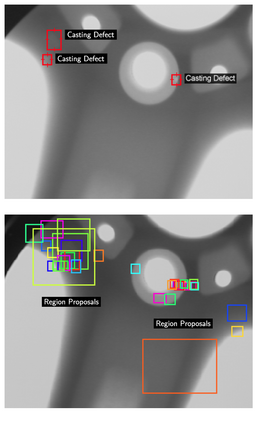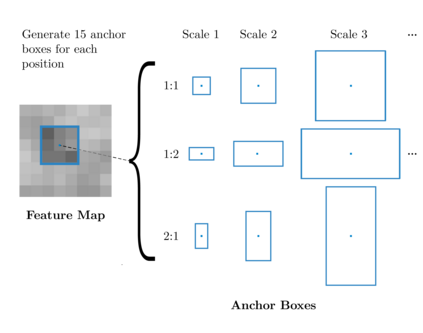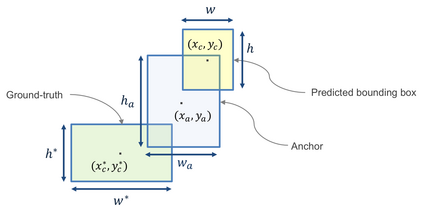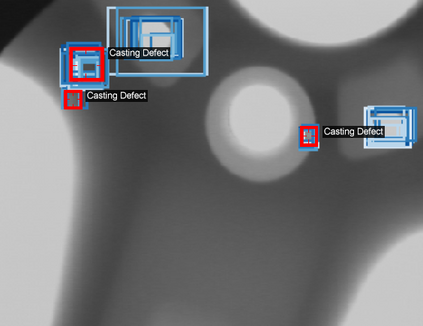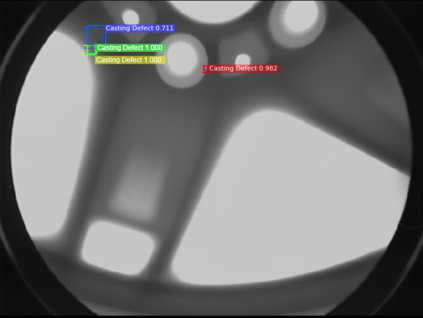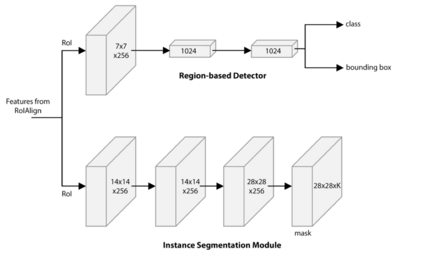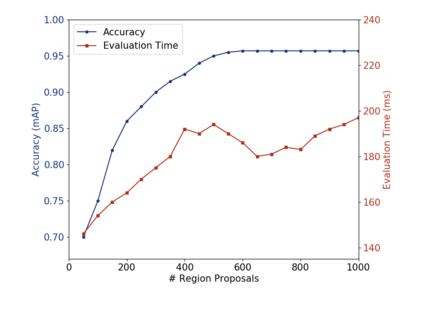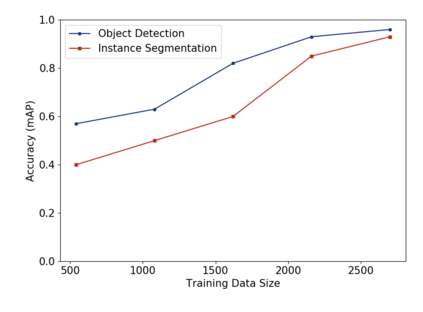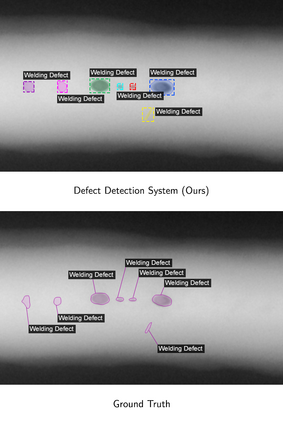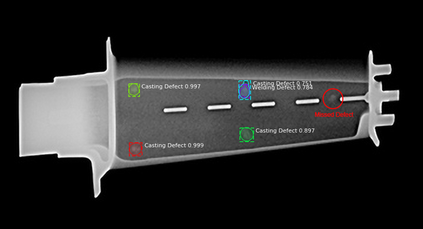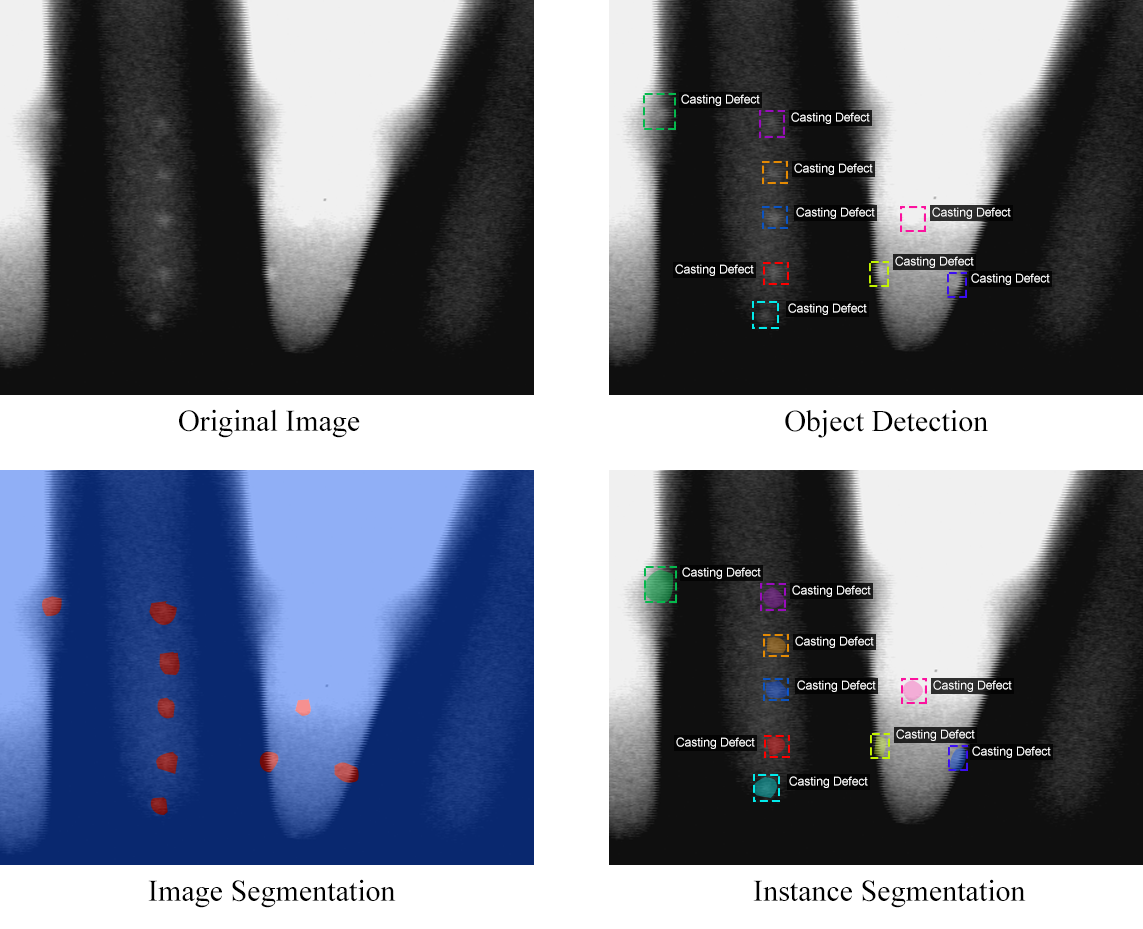Automatic detection of defects in metal castings is a challenging task, owing to the rare occurrence and variation in appearance of defects. However, automatic defect detection systems can lead to significant increases in final product quality. Convolutional neural networks (CNNs) have shown outstanding performance in both image classification and localization tasks. In this work, a system is proposed for the identification of casting defects in X-ray images, based on the mask region-based CNN architecture. The proposed defect detection system simultaneously performs defect detection and segmentation on input images, making it suitable for a range of defect detection tasks. It is shown that training the network to simultaneously perform defect detection and defect instance segmentation, results in a higher defect detection accuracy than training on defect detection alone. Transfer learning is leveraged to reduce the training data demands and increase the prediction accuracy of the trained model. More specifically, the model is first trained with two large openly-available image datasets before fine-tuning on a relatively small metal casting X-ray dataset. The accuracy of the trained model exceeds state-of-the art performance on the GDXray Castings dataset and is fast enough to be used in a production setting. The system also performs well on the GDXray Welds dataset. A number of in-depth studies are conducted to explore how transfer learning, multi-task learning, and multi-class learning influence the performance of the trained system.
翻译:金属铸件的自动检测缺陷是一项艰巨的任务,因为很少出现和出现缺陷,但是,自动缺陷检测系统可能导致最终产品质量的显著提高。进化神经网络在图像分类和本地化任务方面表现突出。在这项工作中,根据面具区域CNN结构,提议建立一个系统,以识别X射线图像中的铸件缺陷。拟议的缺陷检测系统同时对输入图像进行缺陷检测和分解,使其适合一系列缺陷检测任务。事实证明,对网络进行培训,以同时进行缺陷检测和缺陷实例分解,结果发现缺陷的准确性高于仅进行缺陷检测培训。转移学习被用来减少培训数据需求,提高所培训模型的预测准确性。更具体地说,模型首先经过两个大型公开可得的图像数据集的培训,然后对相对较小的金属铸件X光数据集进行微调。经过培训的模型的准确性超过了GDXray Cast数据集的状态,在GX级数据采集过程中使用得足够快。在多层次的学习系统上进行了学习。




